If you’re not familiar with chicken wattles, then you might agree that they are a curiosity of some sort.
What is a wattle on a chicken, and what does it do?
That’s just some of the questions you might ask. Well, you don’t have to wonder anymore. Today, it’s going to be all about chicken wattles!
Fleshy Parts?
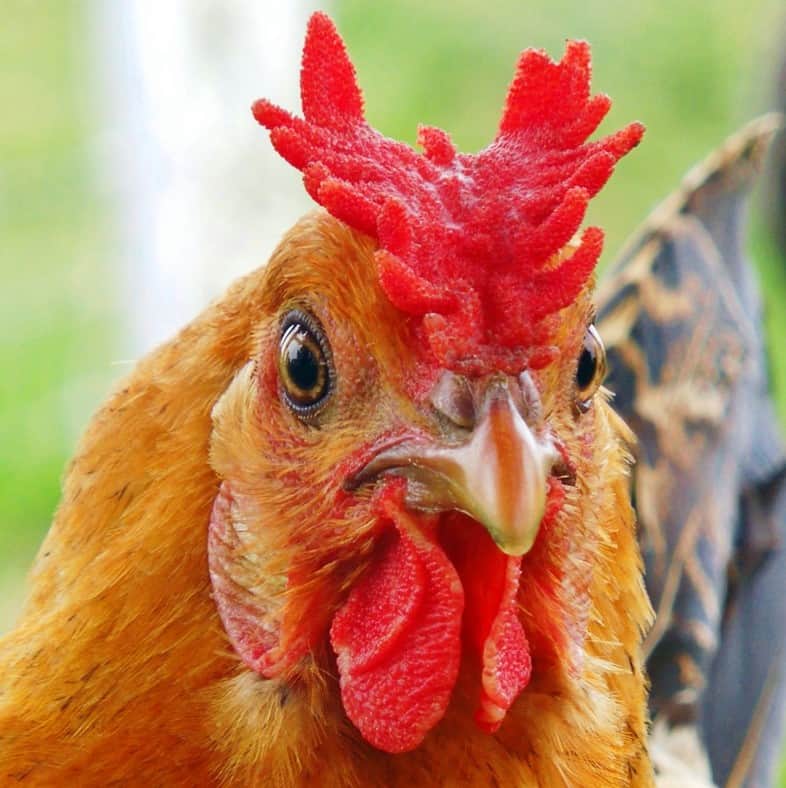
The wattle could be described as the fleshy part in the face of a chicken. However, there are two other fleshy parts that you can find on the head of a chicken.
Let’s briefly discuss where you can find each one before discussing the wattle in detail.
Discussing these parts and their position on the chicken’s head is essential for clear understanding.
- Comb – The comb is the fleshy part that you can see on top of the head of a chicken.
- Ear Region – The area near the ear, often with distinctive coloration, is located on the side of the head of a chicken.
- Wattle– The wattle is the fleshy part that you can see below the beak of a chicken.
The comb and the wattle are almost always red, but the earlobe comes in different colors. Because of their position, it is easy to mix up the wattle and the comb if the earlobe is elongated and it has the same color.
This article focuses on chicken wattles. If you want to know more about chicken comb, click here.
What is a Wattle on a Chicken?

Again, the wattle is the fleshy part that you can find below the beak of a chicken.
It comes in different shapes, sizes, and shades of red.
Wattles could be big or small, short or long, and they almost always come in weird shapes.
Many things could affect how chicken wattles look.
First on the list is the chicken’s gender. Rooster wattles are different from hen wattles in more ways than one. Usually, roosters have more noticeable wattles than hens. Also, wattles develop a little earlier in males than females. More on this topic later.
Next, wattles differ from one breed to another. For example, a Minorca would usually have a larger wattle compared to a Chantecler. To add, a Speckled Ranger would have a smaller wattle than a Gallina di Saluzzo.
There’s an explanation for why some breeds have larger wattles than others. We will talk more about this later when we talk about the functions of the wattles.
Lastly, the appearance of the wattle changes depending on the health of the chicken. With this, it is possible to see a breed known for its large wattles having small wattles. In that case, it could mean that the chicken is sick.
Wattles may look different from one chicken to another, but all wattles serve the same purpose.
What is the Purpose of the Wattle?
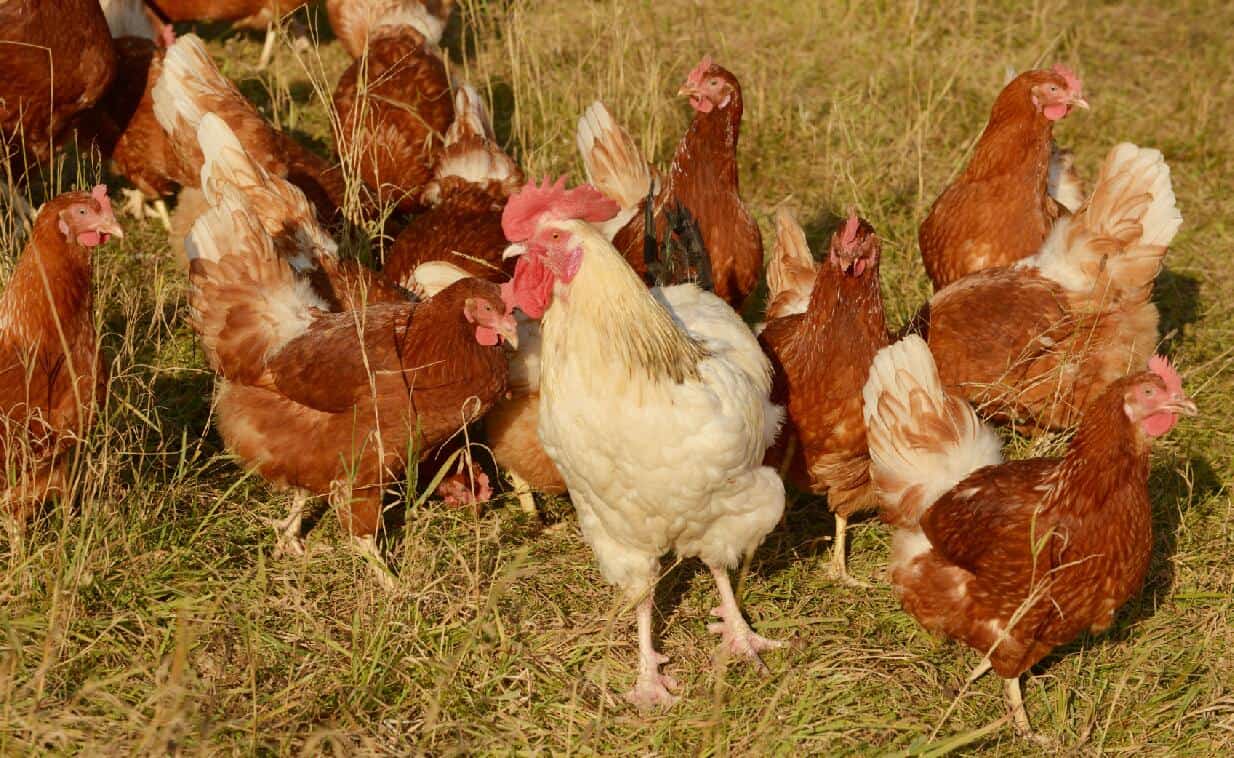
First and foremost, wattles serve the chickens. However, as you will see in a bit, it is also valuable to the lives of chicken handlers.
Wattles Help Chickens Cool Down
Have you ever wondered if chickens sweat like us? Well, they don’t!
The way chickens can cool themselves is through blood circulation from the comb and wattles. This is probably the main function of the wattles on your chickens.
Earlier, we mentioned that there is a reason different chicken breeds have different wattle sizes. As you might have guessed, chickens meant to thrive in places with hotter weather conditions have larger wattles. Generally, chickens that are bred for colder climates tend to have smaller wattles, though this can vary.
If you live in a hot area or are looking for some heat-tolerant chickens, you might want to look for those birds with big wattles. Rhode Island Reds, White Leghorns, and Minorcas are some great choices you can look into.
Wattles Help Chickens with Attracting Mates
Another function of the wattles is to attract mates.
Wattles, along with combs, are one of the ways roosters attract hens. However, it is unclear how exactly a male attracts a female with his wattles. Larger wattles do not always win over females. Some even say that hens find huge wattles to be unattractive.
In a process many call tidbitting, a rooster will call a hen when he finds a treat. He will then rock his head back and forth (as if nodding) to supposedly show his wattles.
However, tidbitting could also be merely a way for one chicken to inform the others that it has found some food. Tidbitting is more associated with a mother hen teaching her chicks what is and is not food.
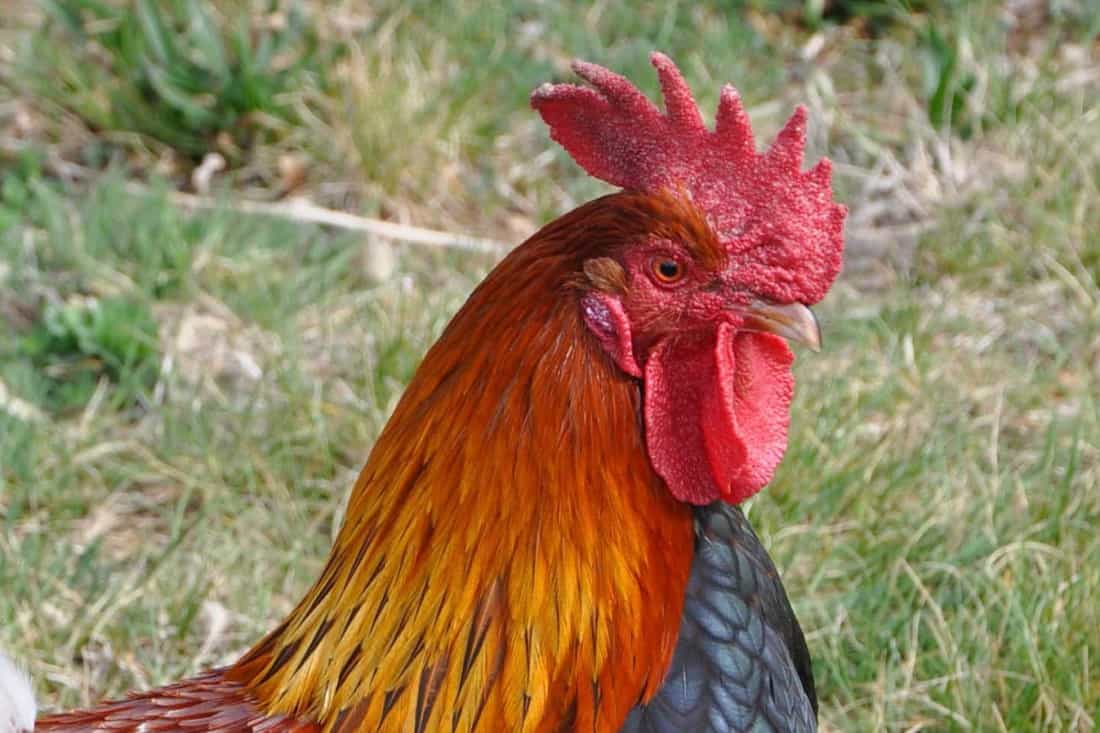
Wattles Help Handlers Find Good Layers
When it comes to wattles, the focus is more on the roosters. Now, let’s take a look at the hens.
One way to find a good layer is to examine the hen’s wattles. A good layer would usually have bright wattles.
You don’t want to go for a hen with pale wattles. There is a big possibility that these hens are not good layers.
Wattles are also a sign that a pullet is about to start laying some eggs.
When the wattles appear on a hen and start gaining color, you can expect some eggs from your pullets soon.
Earlier, we mentioned that a good layer should have bright wattles.
At the start, you might notice your hens with a pinkish wattle and odd-looking eggs. You might worry and think there must be something wrong. After all, we did say that bright wattles are desirable.
Well, you don’t have to worry. It’s normal. Your pullet’s wattles are just starting to gain some color. Also, your pullet is just starting in the egg-laying business. You could say the body of your chicken is not yet fully developed, that’s why. Allow your girl to adjust and mature. Her wattles will redden, and her eggs will look normal soon.
Wattles Are Indicators of Chicken Health
Additionally, you can also use your chicken’s wattles as a health tracker.
Your chicken’s wattles could only be a health tracker if you know what it actually looks like in the first place. Make sure you take some time to research how your chicken’s wattles should actually look.
It is a good idea to check your chickens when you notice any change in the shape, size, and color of their wattles. Additional symptoms such as lethargy should get you concerned.
Do not take the health of your chicken lightly. Some diseases are easy to pass from one chicken to another. These types of illnesses could wipe your entire flock out if not caught and stopped early on. Contact your local vet for a consultation if necessary.
Here are some of the most common illnesses that your chickens can get.
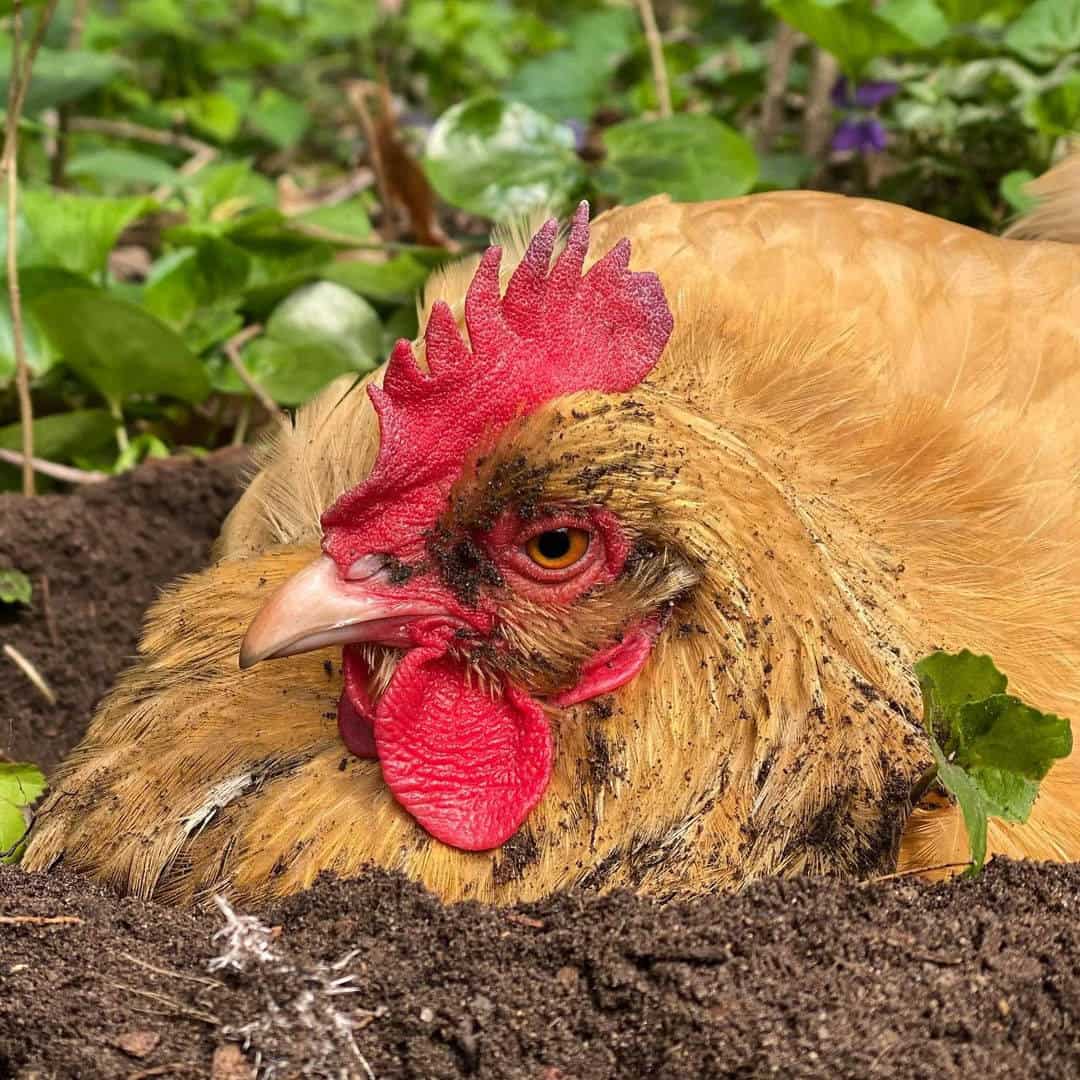
Wattles Help Handlers with the Sexing Process
Wattles Can Aid in Determining Gender Alongside Other Characteristics
Sexing is a process to distinguish males and females.
As you might already know, chicks don’t have wattles when they first hatch from their shells. In case you’re trying to sex day-old chicks, wattles won’t be able to help.
On the other hand, if you can wait a few weeks, wattles will be able to help you identify your roos from your hens.
The development of wattles varies from one breed to another. However, it will help tell if you have a roo or a hen earlier when you know when wattles develop on a particular chicken breed.
Wattles develop earlier on males than they do on females. If you have a chick growing its wattles a little earlier than expected, then there’s a high chance that it is a rooster.
Of course, when both your males and females have matured, the wattles will be more helpful in determining the males from the females. If we’re talking about the same breed, the roosters almost always have larger wattles.
Summary
What is a wattle on a chicken?
When you first see a chicken, wattles are not one of the first things you will notice. However, if you plan to go into the poultry world, it is undoubtedly something you have to know as a great chicken handler.
Wattles are not one of the most noticeable features of a chicken, but they are valuable to a handler and their chicken’s life. It’s small, but it is the secret behind big things.
If you want to know more about chicken anatomy or chicken health, then you can check out our other discussions. We’ll see you there!


Joseph Hudson has been raising chickens for over 15 years. In 2018, he completed the Agriculture & Natural Resources program at Mt. San Antonio College. He currently raises over 1400 chickens on his 7.5-hectare farm. He keeps sharing his experience on raising healthy and happy chickens on Chicken Scratch The Foundry.
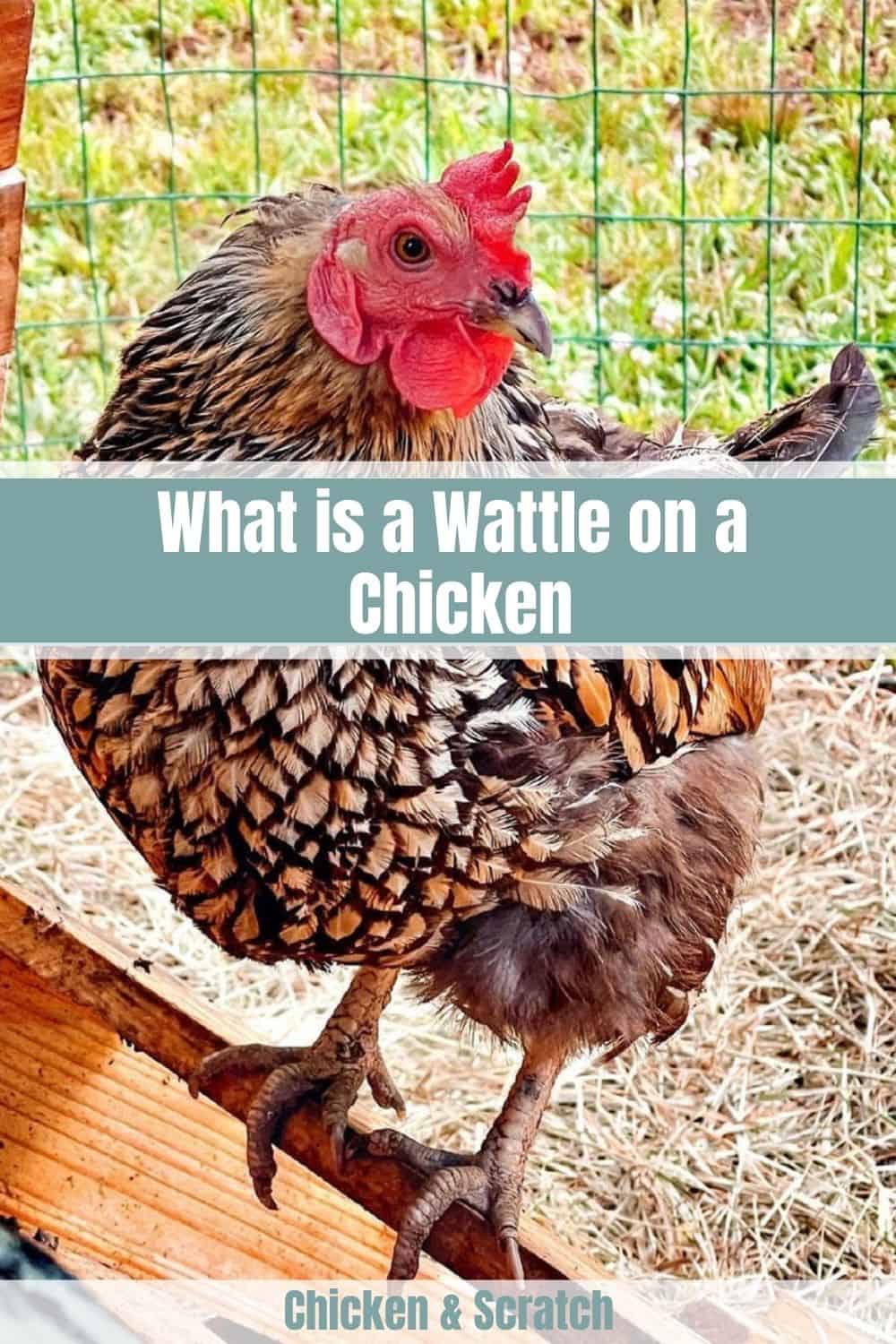







Just so you know, I really enjoyed this article. Granted I’m super lit right now.